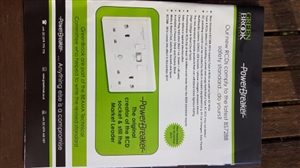SRCDs are intended for use in circuits where the fault protection and
additional protectionan RCD are already assured upstream upstream of the SRCD .
so, pointless, unless you require to play the chance of failure game, and cascade 2 devices with poor failure rates, to have a system over all with a reasonable one.
So if say the change of wither the 1st RCD or the second failing to trip is perhaps 5%, the chance of both failing, so long as the failure mechanisms are independent is 0.25%.
I suspect this is not the intention.
John Peckham:
BS 7288: 2016 says.
" SRCDS are only intended to supplementary protection downstream of the SRCD. SRCDs are intended for use in circuits where the fault protection and additional protection are already assured upstream upstream of the SRCD".
So these devices can no longer be used for additional protection. I assume this is why the do not appear in Appendix 1 of BS 7671 or in the body of the standard.
I do not know if SRCDs made to the previous standard, BS 7288: 2009, are suitable for additional protection as they were of a different construction or it was discovered that all types are unsuitable?
So if you discovered an SRCD installed on an installation for additional protection or fault protection on a Periodic Inspection they would be a C2?
I think this is the issue Graham Kenyon was referring to on the earlier thread.
In English then
SRCDs are intended for use in circuits where the fault protection and
additional protectionan RCD are already assured upstream upstream of the SRCD .so, pointless, unless you require to play the chance of failure game, and cascade 2 devices with poor failure rates, to have a system over all with a reasonable one.
So if say the change of wither the 1st RCD or the second failing to trip is perhaps 5%, the chance of both failing, so long as the failure mechanisms are independent is 0.25%.
I suspect this is not the intention.

We're about to take you to the IET registration website. Don't worry though, you'll be sent straight back to the community after completing the registration.
Continue to the IET registration site